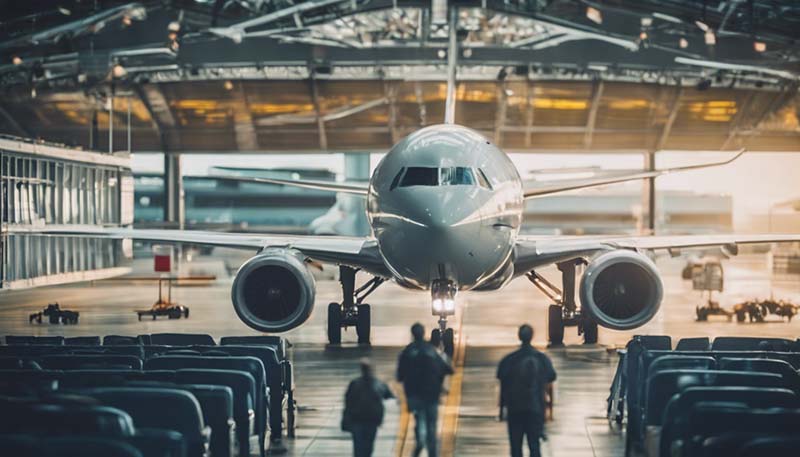Introduction
The aviation industry has experienced tremendous growth over the past few decades, with air travel becoming an essential mode of transportation for millions of people worldwide. However, this growth has also led to an increased focus on safety and security, particularly in the wake of high-profile incidents such as hijackings and terrorist attacks. Security screening and passenger vetting are two critical components of aviation safety that help ensure the well-being of passengers, crew, and the general public. This article will explore the importance of these measures and discuss the various methods and technologies employed to achieve a secure and efficient aviation environment.
Historical Context and Evolution of Security Measures
The need for security measures in aviation dates back to the early days of commercial flight. However, it was the tragic events of September 11, 2001, that significantly changed the landscape of aviation security. In response to the attacks, governments and aviation authorities around the world implemented stricter regulations and invested heavily in advanced technologies to enhance security screening and passenger vetting processes.
Advertisement
Since then, the industry has continued to evolve, adapting to new threats and challenges. This has led to the development of various security measures, including advanced imaging technology, biometric identification, and data analysis tools. These measures have been designed to detect and prevent potential threats, ensuring the safety of passengers and crew members alike.
Security Screening: The First Line of Defense
Security screening is the process of inspecting passengers, their luggage, and other items brought onto an aircraft to ensure that no prohibited or dangerous items are present. This process serves as the first line of defense in aviation safety, as it aims to prevent potential threats from boarding the aircraft in the first place.
Checkpoint Screening
At the core of security screening is the checkpoint screening process, which involves the use of X-ray machines, metal detectors, and pat-downs to inspect passengers and their carry-on items. These measures are designed to detect weapons, explosives, and other dangerous items that could pose a threat to the safety of the flight.
Checked Baggage Screening
In addition to carry-on items, all checked baggage must also undergo security screening. This process typically involves the use of X-ray machines and explosive trace detection (ETD) equipment to identify any potential threats hidden in luggage.
Advanced Technology and Innovation
As threats continue to evolve, so too must security screening technology. In recent years, advancements such as computed tomography (CT) scanners and biometric identification systems have been introduced to enhance the efficiency and accuracy of security screening processes. These technologies allow for more detailed inspections and faster processing times, improving both safety and passenger experience.
Passenger Vetting: Identifying Potential Threats
Passenger vetting is the process of collecting and analyzing information about individuals traveling on commercial flights to identify potential threats and prevent dangerous individuals from boarding aircraft. This process is crucial in maintaining the overall safety of air travel, as it helps to prevent incidents such as hijackings and terrorist attacks.
Watchlists and No-Fly Lists
One of the primary tools used in passenger vetting is the maintenance of watchlists and no-fly lists. These lists contain the names of individuals who are deemed to pose a threat to aviation safety and are therefore prohibited from boarding flights. By cross-referencing these lists with passenger manifests, authorities can identify and apprehend potential threats before they reach the aircraft.
Data Analysis and Risk Assessment
In addition to watchlists, data analysis and risk assessment tools play a crucial role in passenger vetting. By analyzing passenger data such as travel history, booking patterns, and behavioral indicators, authorities can identify potential threats and take appropriate action. This may include conducting additional screenings or interviews, or in some cases, denying boarding altogether.

Collaboration and Information Sharing
Effective passenger vetting requires strong collaboration and information sharing between various stakeholders, including airlines, government agencies, and international partners. By working together and sharing information, these entities can better identify and assess potential threats, ensuring the safety and security of air travel.
Challenges and Future Directions
Despite the significant progress made in security screening and passenger vetting, there are still challenges to be addressed. These include the need for more efficient and accurate screening technologies, the potential invasion of privacy, and the constant evolution of threats. To overcome these challenges, the industry must continue to invest in research and development, foster collaboration, and adapt to changing circumstances.
Looking ahead, the future of aviation safety will likely involve the integration of advanced technologies such as artificial intelligence and biometrics, as well as increased automation and data-driven decision-making. By embracing these innovations, the industry can continue to enhance security measures and ensure the safety and well-being of passengers, crew, and the general public.
Conclusion
Security screening and passenger vetting are essential components of aviation safety that play a critical role in ensuring the well-being of all those involved in air travel. By understanding the importance of these measures and staying informed about the latest technologies and best practices, the industry can continue to adapt and evolve, ultimately creating a safer and more secure aviation environment for everyone.